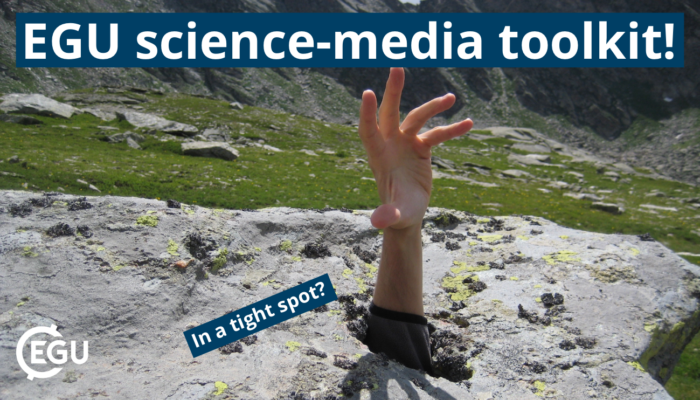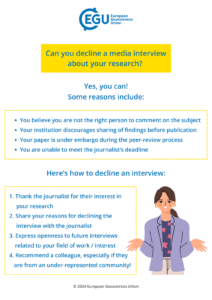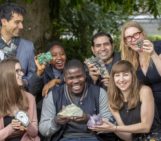
Your research deserves recognition beyond your peer-reviewed paper. While academia is often considered the hallmark for knowledge generation, the dissemination of your work should take further steps so that your scientific research can reach the people it is meant to help. Because your audience may not always be experts in your field and may require simplified explanations of your science, EGU is proud to introduce our Science-Media Toolkit! It is designed for researchers and scientists like yourself to confidently engage with the media.
 Why is communicating your work important?
Why is communicating your work important?
The democratization of knowledge is one of the key reasons why you should consider not confining scientific knowledge to academia. In addition to this, science has a pivotal role in shaping both public policy and personal choices, so the art of effective communication means contributing not only to informed decision-making, but combating misinformation and enriching your area of expertise.
Lost in Translation: Think of it as a dance
Yes. Science outreach is difficult and often not as rewarding career-wise as an h-index boost. From simplifying complex terminology, ensuring no inaccuracy is reported, to overcoming confirmation bias, science communication has its fair share of challenges. Yet the public needs to develop a relationship with the scientists to foster trust and compassion, and collaborating with media outlets is one great way to achieve this!
Unfortunately, the gap remains significant and much gets lost in translation. Think of communicating with journalists as a dance: just like a tango demands both dancers to master rhythm and harmony, science/media communication requires mutual understanding and collaboration from both scientists and journalists in order to achieve effective dialogue. Want to learn the steps? That’s where the Science-Media Toolkit comes in!
Where to begin?
We understand your eagerness to share your scientific research, as much as we understand that the first step can sometimes be the hardest. Blogs? Articles? Media interviews? Press releases? Press conferences? Outreach talks? It can be overwhelming. Instead, we want you to view this from a different angle: an abundance of choices. This is where our toolkit comes in, providing you will all the assistance you need to take a step towards bridging that gap between you and the public. So make sure to check out the carefully selected list of videos, guides, and blogs to navigate your journey communicating with the media.
Tips for speaking with journalists:
It is important to remember that you always have two audiences: the journalist, with whom you will be working directly, and their audience. This is why you should not only be on the receiving end of questions, but also learn how to ask them. These questions may include:
- clarifying the story’s focus,
- the intended audience,
- the level of detail sought,
- proposed publication outlets,
- deadline,
- and preferred communication method.
Knowing the right questions will help you understand the audience’s interests, values, and concerns, so that you can tailor your message and effectively maximize your reach. The Science-Media Toolkit provides you with examples of such questions to prepare you for your media interactions.
What if you want to decline?
 Declining a media interview is also an option, with reasons ranging from feeling inadequately qualified to meet the journalist’s deadline to prioritizing other commitments that align more closely with one’s current focus and objectives.
Declining a media interview is also an option, with reasons ranging from feeling inadequately qualified to meet the journalist’s deadline to prioritizing other commitments that align more closely with one’s current focus and objectives.
If you want to decline, express gratitude for reporter’s interest, share reasons politely, and remain open to future opportunities. Helpful resources, such as our EGU guides and links to webinars available in the toolkit, are there to assist you, along with videos of providing insights directly from seasoned researchers from around the world.
Now what?
Now that you understand the importance of communicating your research beyond academia and the challenges involved in science media communication, it is time for you to start amplifying the impact of your work. Whether you’re unsure where to begin, or need guidance on speaking with journalists, the Science-Media Toolkit offers a wealth of information for you to navigate your journey effectively. Sometimes you need more help than just a toolkit can provide however, so EGU is always here to offer help! If you have any questions, or just need advice, please get in touch by emailing media@egu.eu!




